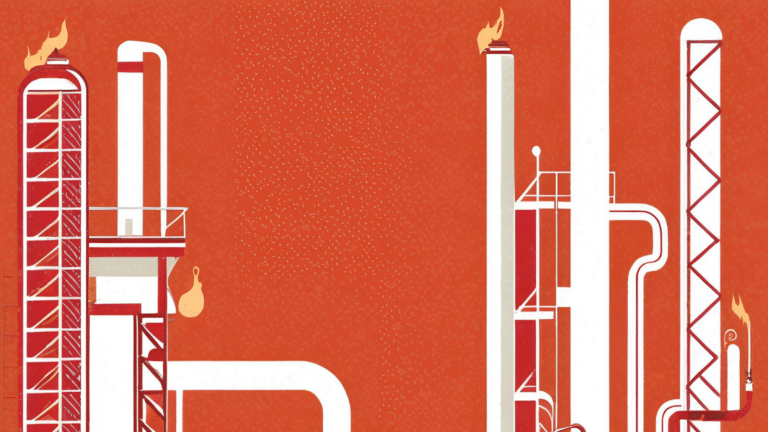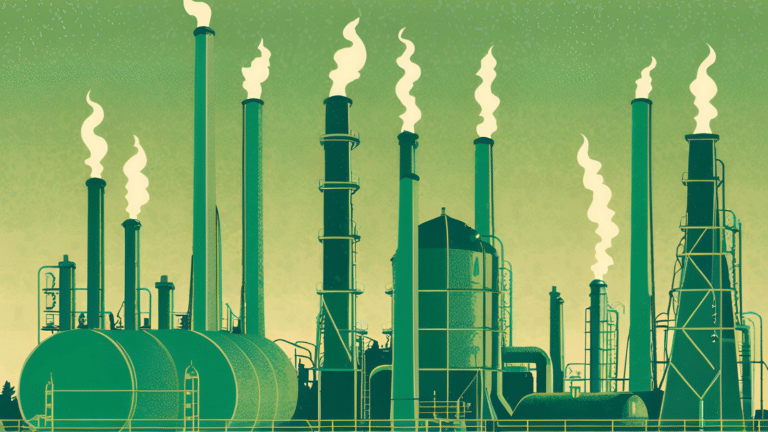This commentary represents the research and views of the authors. It does not necessarily represent the views of the Center on Global Energy Policy. The piece may be subject to further revision.
Contributions to SIPA for the benefit of CGEP are general use gifts, which gives the Center discretion in how it allocates these funds. More information is available at Our Partners page. Rare cases of sponsored projects are clearly indicated.
While Covid-19 will have a serious detrimental impact on the economies of Latin America and the Caribbean, the oil price war is a second economic blow for the region. Relative to the prevailing outlook in late January, Latin America will face a year of lower economic growth and much weaker public finances, leading to potential downgrades in sovereign ratings. But the real problem is that the region has limited capacity to offset the external shocks with monetary and fiscal policies, darkening the outlook further. To create that capacity, governments will need to adopt a strategy that combines short-run stimulus measures while at the same time implementing structural reforms that improve the fiscal outlook in the medium-term.
It is worth noting that many countries in the region were already under stress before the Covid-19 pandemic. Chile and Colombia have been hit by social protests over economic inequality and a lack of social mobility; Venezuela is in the midst of the worst humanitarian crisis the region has ever seen. How the pandemic and the oil war interact with social unrest may not be clear, but it appears that unstable initial conditions can amplify their economic ramifications.
Lower overall demand, resulting from a deceleration in global growth—which will have its worst year in a decade in 2020—is already affecting Latin American exports. According to the IMF, global supply and demand for dry bulk shipping stocks such as building materials and commodities have fallen. The Baltic Dry Index (which measures freight rates for grains and other dry goods around the world) fell 50 percent from one month before the eruption of Covid-19 (January 11, 2020) to one month after that date.
At the same time, lower oil prices will cause a significant deterioration of fiscal accounts for nearly all the large economies in the region, putting them into adjustment mode at the worst possible time. To complicate matters, the flight of investors to low-risk assets, such as US Treasuries and gold, implies that there is less financing available and that borrowers will face higher interest rates in global markets. This applies both to sovereign and private sector issuers.
According to the Institute of International Finance, the net outflow of portfolio capital from emerging countries was US$29.4 billion in the two months since the eruption of Covid-19. The twin shocks—Covid-19 and low oil prices—can be compounded by the response of capital flows. Periods of net capital outflows are unambiguously associated with lower investment and economic growth in Latin America.
If not managed well, lower terms of trade and export volumes, combined with less availability of foreign capital, have the potential to deepen the reduction in per capita income that the region has seen since 2014. All of this in the year when, according to the IMF forecasts, the region was hoping to reverse that trend.
The Effects of Covid-19
Leaving the effect on commodity prices aside, several direct effects of Covid-19 will impact Latin American economies. One is the interruption of supply chains. This is particularly important for the two largest Latin American economies—Brazil and Mexico—which import Chinese goods for their manufacturing sectors, especially in automobiles, electronics, and machinery and equipment. As these inputs become less available due to factory closures and disruptions in global trade, manufacturing output of Mexico and Brazil will suffer.
In terms of global value chains, no country in Latin America is as engaged as Mexico. Imports of intermediate goods from China represent 8 percent of Mexico’s manufacturing value-added, and 6 percent of Brazil’s. Overall imports from China are between US$70-80 billion (6 percent of GDP) in Mexico, and US$35 billion (1.7 percent of GDP) in Brazil. This means Mexico is more exposed to disruptions in supply chains, as it is more open and exports have a much greater role in its economy (34 percent of GDP in Mexico versus 13 percent of GDP in Brazil).
However, Chile’s currency has depreciated the most as a result of Covid-19. China buys one-third of Chile’s exports—9 percent of GDP—so lower economic growth in China means not just lower commodity prices but also lower export volumes for Chile. Brazil also sells about one-third of its exports in China, but they represent a much lower share of GDP (4 percent in 2019). Argentina, Colombia, Ecuador, and Peru also have significant exposure, but essentially through prices of commodities.
A second effect with particularly severe consequences in Latin America and the Caribbean is the reduction of travel and tourism, including the cruise industry. These services are the leading export activity for a number of countries, especially in the Caribbean. In those cases, the reduction in visitors resulting from travel restrictions and quarantines will have a severe cost in terms of lost economic activity, especially jobs.
In addition to these external channels, cancellation of large events, school closures, and limited social interaction will reduce domestic demand. Recent survey data on the retail sector in Colombia are already suggesting a reduction in expected sales over the next three months. This results from households that become more cautious with their consumption decisions given the risk of contagion and the uncertainty about the economic outlook. The stock market crash also sends a negative signal—even for those who are not equity investors.
Compounding the Effects of Covid-19 with the Oil Price War
China’s share of global commodities demand has increased dramatically during the past two decades. Today, China accounts for close to 50 percent of global demand in copper and nickel, and 15 percent of world oil consumption. Naturally, the decline in economic activity in China has meant lower prices for these commodities.
But in the case of oil—as argued in recent commentaries by CGEP scholars Jason Bordoff and Antoine Halff—other, more structural forces are at play that could outlast the effects of Covid-19. The largest increase in world oil production in history is happening while global demand has been less dynamic, in part because China is growing at a slower pace—even before the eruption of coronavirus. The temporary decrease in oil demand from China over the past few weeks is simply the tipping point in a market characterized by a structural oversupply of close to 2 million barrels per day (bpd), according to some estimates.
Excess global supply can be corrected in various ways. One is the decline in prices that will push the less efficient producers out of the market. An alternative is for a group of producers to cut production voluntarily and in a coordinated way, which is what Saudi Arabia intended to do initially at the OPEC+ meeting during the first week in March. After failure to agree to limitations at the meeting, and Saudi Arabia’s subsequent oil price drop, we are now in a world where coordinated solutions seem unlikely—at least for now. And not just that. Lack of coordination has resulted in an even higher increase in oil supply, with Saudi Arabia announcing that it will raise production to 12.3 million bpd in April from 9.7 million bpd last January. The UAE has said that it will increase output by 1 million bpd, and Russia announced last week that it has the capacity to increase production by 500,000 bpd. Should all these increases be realized, global supply would rise by 4 million bpd, putting more downward pressure on prices.
Regardless of whether or not these threats are credible, in an oil price war, Latin America is not well-positioned. Costs of oil production are higher than US$40 in Brazil’s pre-salt and well above that figure for unconventional developments in Vaca Muerta in Argentina. Production will still be economically viable in Colombia, Mexico, and Venezuela, where lifting costs are below that figure. Ecopetrol in Colombia, for example, has said that its average cost per barrel is US$30, although this does not say much about the marginal costs, which are higher than that in some areas. Stock prices of Ecopetrol and Brazil’s Petrobras on the NYSE fell by more than half last week, indicating markets consider that profits from these companies could fall in a significant way in a low-price scenario.
Apart from the specific impacts on oil companies, the main implications of low oil prices for Latin America are fiscal. Each US$10 decline in the price represents a loss of fiscal revenues close to 1 percent of GDP in Ecuador and Venezuela, two countries heavily fiscally dependent on oil. Brazil, Colombia, and Mexico lose half of that, which is still a significant number. To complicate matters even more, before the decline in oil prices of March 9, 2020, there was already a large difference between the oil price used by some countries in their fiscal accounts and the actual market price. For Mexico and Colombia, that difference has now reached $30 per barrel.
In Mexico, even if the federal government protects its revenues with a hedging strategy that has been a model for other countries, Pemex is highly exposed and vulnerable. Fitch downgraded Pemex to junk status last year, and there is a clear risk that other ratings agencies could follow. The government may need to provide additional support to the company at a time when the economy is nearing a recession and requires additional investment in infrastructure and the social sectors.
In Argentina, current global conditions mean the IMF will show more flexibility in accommodating the demands of the Fernández administration for a debt restructuring that is underway. The key element is a renegotiation of less-strict fiscal targets in the next two years, with the hope that this will improve growth numbers. However, with lower oil prices, developments in Vaca Muerta will be slowed and an increase in production delayed. This means lower growth prospects for the country, which was counting on oil to jump-start the economy.
In Brazil, Latin America’s largest economy, the effects of the twin shocks are already apparent. The growth outlook for 2020 will be revised downward, from 2.2% to a likely 1.5%. Given relative low inflation, Brazil’s central bank will try to offset lower growth figures with interest rates cuts, which have already been announced.
In Colombia, lower oil prices imply that the large current account imbalance will widen even more this year, likely exceeding 5 percent of GDP, and generating concerns on the part of foreign investors. But the real pressing issue is the fiscal outlook. The pre-existing social unrest and the new twin shocks will require additional government expenditures in the short-term. But with tax reform approved last December that will reduce fiscal revenues, low oil prices come at the worst possible time. Under current oil market conditions, government revenues in 2021 could fall by at least 1 percent of GDP relative to 2020. To avoid unpleasant moves by rating agencies, the government needs to put forward a credible plan and undertake decisive actions that improve the long-term fiscal outlook.
Ecuador became the first Latin American country to announce a fiscal adjustment (of 2 percent of GDP) in response to the oil price shock. Growth prospects now look grim. The budget cut is eliminating the Ministry of Youth and 10 other government agencies. External financing has closed entirely and its sovereign bonds are now trading at the same discounts as Argentina’s, which imply rates over 25 percent. Again, the IMF will have to ease conditions in the program that was agreed to last year, but even in that scenario it will be another hard year for Ecuador without prospects of major recovery anytime soon.
In Guyana, where oil production is expected to begin and reach 102,000 bpd by midyear, lower oil prices will probably reduce that figure. In the meantime, the country is immersed in a political struggle between two leading forces that claim to have won the March 2 elections. Low prices and political instability will probably delay investment plans by oil companies operating in the country, resulting in lower GDP growth relative to the expected figure of 85 percent, which would have made this very small country (population 800,000) the fastest growing in the world this year.
Finally, lower oil prices will further deepen the humanitarian and economic crisis in Venezuela. With the economic sanctions imposed by the US and other countries, Venezuela is selling oil at very high discounts to buyers that are willing to circumvent the measures. With current world prices, effective prices for Venezuela’s crude could fall below their break-even, reducing oil production and revenues for the government. This could increase migration into Colombia and neighboring countries and put additional pressures on the already stressed public finances of host countries. On the other hand, this could be a tipping point for regime change.
For Latin American nations, navigating these turbulent waters will require a skillful policy response. Greater fiscal space is needed in the short run to accommodate additional health expenditures to ensure the spread of Covid-19 is contained, while stimulus to impacted sectors and overall aggregate demand is provided. At the same time, central banks should cut interest rates where possible and provide additional liquidity to avoid any disruption in credit. However, these measures need to be complemented with a reform agenda that strengthens the medium-term fiscal outlook. Low oil prices will likely outlast Covid-19, and the region needs to be prepared to compensate for the loss of fiscal revenues that result from the new oil scenario. Without these long-term measures, foreign capital and rating agencies could respond negatively to the stimulus measures that are necessary in the very short-term.





